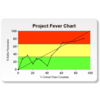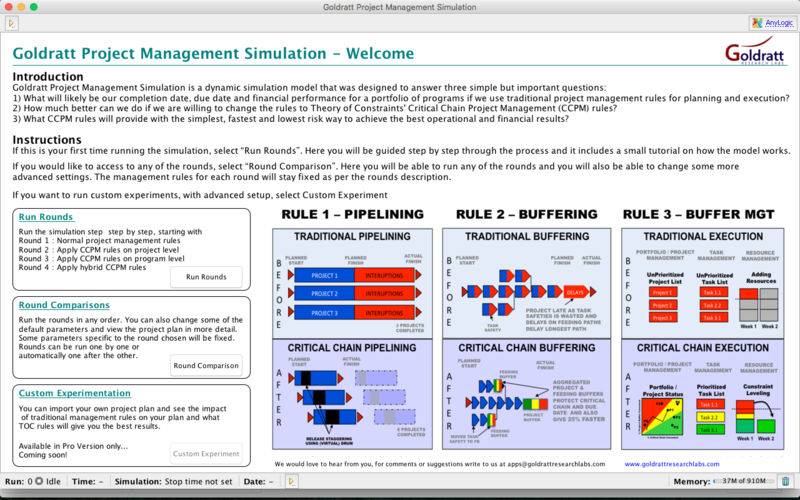点击按钮跳转至开发者官方下载地址...
Goldratt Project Management Simulation is a dynamic simulation model that was designed to answer three simple but important questions:
1) What will likely be our completion date, due date and financial performance for a portfolio of programs if we keep using traditional project management rules for planning and execution?
2) How much better can we do if we are willing to change the rules to Theory of Constraints' Critical Chain Project Management (CCPM) rules?
3) What CCPM rules will provide with the simplest, fastest and lowest risk way to achieve the best operational and financial results?
The simulation models the planning and execution of a Portfolio of Programs. Each Program can consist of one or more Projects. Each Project consists of one or more Phases. Resources and duration estimates used to calculates start and end dates according to project network dependencies are assigned at a phase level.
The default scenario consists of 105 programs, 354 projects, and 1366 phases the planned completion date is 20 January 2022.
The model consists of four Rounds:
In Round 1 traditional project management rules are used. This often results in too much work being released at the same time, resulting in multitasking, causing capacity losses, which in turn results in project and program delays.
In Round 2 CCPM rules are used. This means that Programs are planned with aggregated Program and Feeding Buffers protecting the Program's critical chain and reducing planned cycle times. Work is never started without a full kit. Prioritization of work is based on the ratio of Program Buffer Consumed versus Program Critical Chain percentage completed. No multitasking is allowed. In Round 2, Work in Process (WIP) is controlled at a Project level with a Project WIP Limit.
In Round 3, the same CCPM rules are used as in Round 2. However, Work in Process (WIP) is controlled at a Program level with a Program WIP limit to better synchronize the release of work to resources.
In Round 4, the same CCPM rules are used as in Rounds 2 and 3. However, Work in Process (WIP) is controlled with a Hybrid Rule. The release of work is controlled at the Program level with a Program WIP limit. However, if this release control mechanism causes total starvation of some capacity constrained resource types, then additional work is released to prevent their starvation.
The objective is to see which of the three CCPM Work Release mechanisms gives the best overall results in both operational and financial performance.
We would love to hear from you, for comments or suggestions write to us at apps@goldrattresearchlabs.com







